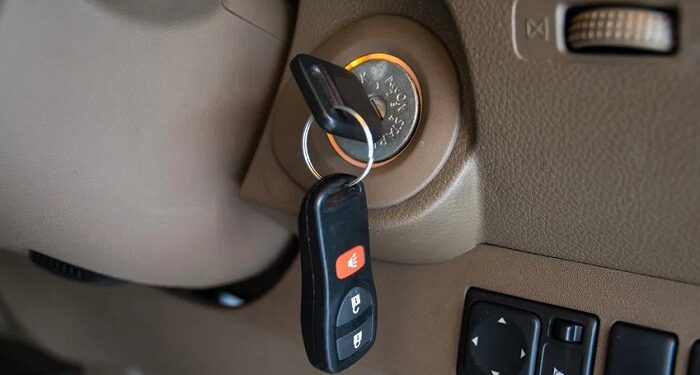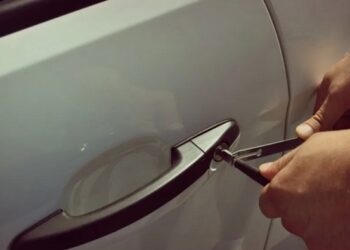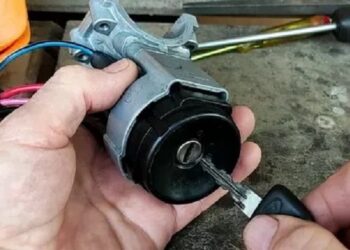It’s one of those moments that can turn an ordinary day into a full-blown crisis. You insert your car key, twist it as usual—then snap. Half of the key stays in your hand, and the other half is lodged deep in the ignition barrel.
It’s frustrating. It’s inconvenient. And for many drivers, it raises more questions than answers.
But take a breath—this is a solvable problem.
Here’s a detailed, step-by-step guide on what to do if your car key breaks off in the ignition, why it happens, what not to do, and how to handle the situation calmly and effectively.
Why Do Car Keys Break in the Ignition?
Before we jump into the solutions, it’s worth understanding what causes this to happen in the first place. A key breaking in the ignition isn’t just bad luck—it’s often a sign of one of the following:
1. Worn-Out Key
Over time, keys become fragile from repeated use. Small cracks, bending, or metal fatigue can weaken the structure—especially with older, traditional metal keys.
2. Faulty Ignition Barrel
If the ignition mechanism becomes stiff or misaligned, it can place unusual pressure on the key during turning.
3. Poor Key Copies
A poorly duplicated key (often cut from an already worn copy) may not fit the ignition correctly and can break more easily.
4. Cold Weather
Metal contracts in cold temperatures. If your key or ignition system is frozen, forcing the key can cause it to snap.
5. Excessive Force
Sometimes, we’re in a rush. But turning a reluctant key with too much pressure is one of the fastest ways to break it.
Immediate Steps to Take: Stay Calm and Assess
✅ Step 1: Don’t Try to Start the Car
Trying to force or start the vehicle with a broken key still inside may cause further damage to the ignition cylinder.
✅ Step 2: Check If Part of the Key Is Protruding
If a visible portion of the broken key is sticking out, extraction may be possible without disassembling anything.
✅ Step 3: Avoid Using Tools You’re Unsure Of
Many drivers instinctively reach for tweezers, pliers, or even super glue (yes, really). Unfortunately, this often causes more harm than good—either pushing the broken piece deeper or damaging the ignition mechanism itself.
Can You Remove the Broken Key Yourself?
In some cases, yes—but caution is key (no pun intended). Here are some safe DIY techniques, especially if you’re stranded or waiting for help.
🔧 1. Use Needle-Nose Pliers or Tweezers
If the broken fragment is visible and you have access to fine-tipped pliers or tweezers, gently try to pull it out. Be careful not to apply force sideways, as this can worsen the issue.
🔧 2. Try a Key Extractor Tool
Key extractor kits (also used by locksmiths) are thin, barbed tools designed to slide alongside the broken piece and hook it out. They’re cheap, available online, and non-invasive.
⚠️ Avoid These Mistakes:
Don’t insert a second key or object in an attempt to “push” the broken part out.
Don’t apply glue in hopes of bonding the two halves—it can damage the ignition barrel.
Don’t hit, bang, or shake the steering column—it won’t help and may trigger steering lock mechanisms.
When to Call a Professional
If:
The key fragment is completely inside the barrel,
The ignition is damaged,
You don’t have the proper tools,
Or you’re unsure about what to do next,
It’s time to call a professional auto locksmith.
A trained technician can:
Extract the broken piece cleanly using precision tools
Assess the ignition for internal damage
Cut and program a replacement key if needed (even if you don’t have a spare)
Recode or repair the ignition lock if it’s worn or faulty
Calling a professional not only saves time but can also prevent costly damage to your vehicle’s ignition system or electronic immobiliser.
Do You Need to Replace the Entire Ignition?
Not always.
In many cases, once the broken key is removed, the ignition barrel can still function correctly—especially if the break was clean and didn’t cause internal misalignment.
However, you may need to repair or replace the ignition if:
The ignition barrel was damaged during removal
The key broke due to internal faults (e.g., worn wafers or tumblers)
The ignition has been problematic over time
Locksmiths often carry replacement parts for common makes and models, and in many cases, they can rebuild the ignition rather than replace it entirely—saving both time and money.
How to Prevent This in the Future
Preventing a repeat of this issue isn’t just about being gentle with your key. It’s also about maintenance, observation, and knowing the warning signs.
✔️ Inspect Your Key Regularly
If it’s bent, worn down, or has hairline cracks—it’s time for a replacement.
✔️ Don’t Ignore Stiffness in the Ignition
If turning the key becomes difficult, have the ignition inspected. It could be a sign of worn wafers or internal resistance.
✔️ Use Silicone Spray (Not WD-40)
Occasional lubrication with non-greasy, silicone-based spray can help prevent mechanical sticking.
✔️ Avoid Key Rings with Too Much Weight
Heavy keychains can pull down on the ignition barrel and increase wear over time.
✔️ Get a Spare Key Made from the Original
If your current key is a copy of a copy, it’s worth getting a new key cut from the original manufacturer’s key code (or from the lock itself).
Final Thoughts
Having a key break in the ignition is frustrating—but it’s also a relatively common and manageable problem. The key (this time, pun fully intended) is to stay calm, avoid rash DIY attempts, and assess your options carefully.
In many cases, with the right tools or the help of a professional, your vehicle can be back on the road the same day—no towing required, and no major repairs necessary.
So next time your key turns with resistance or looks a little worse for wear, don’t wait for the snap. A little attention today might just save you from a stressful situation tomorrow.
Materials from this website were used in writing this article.









